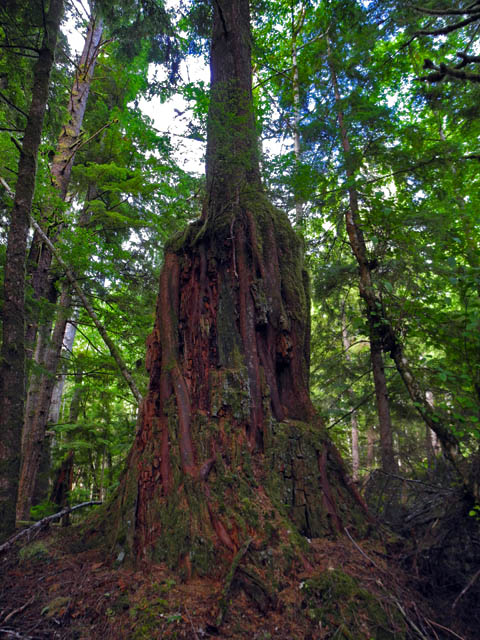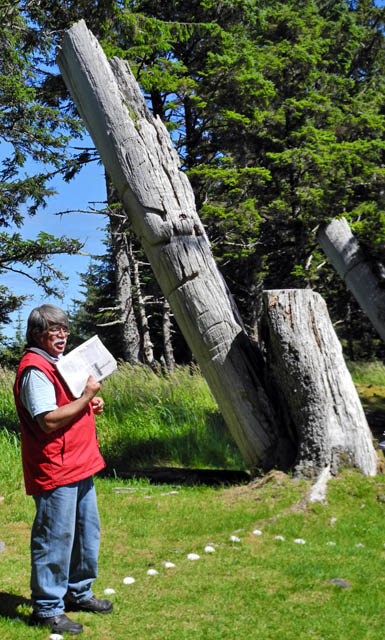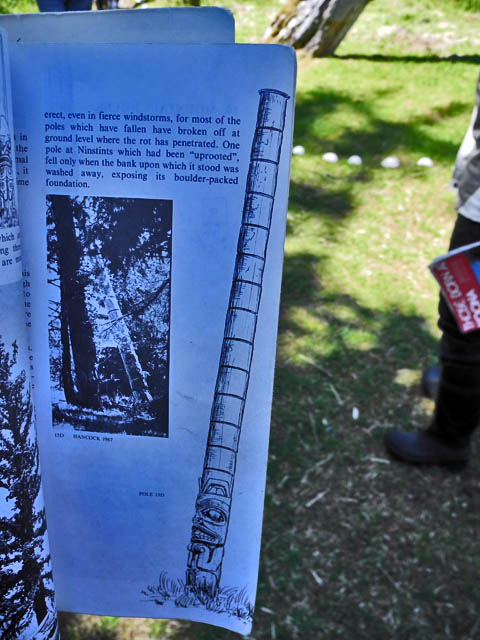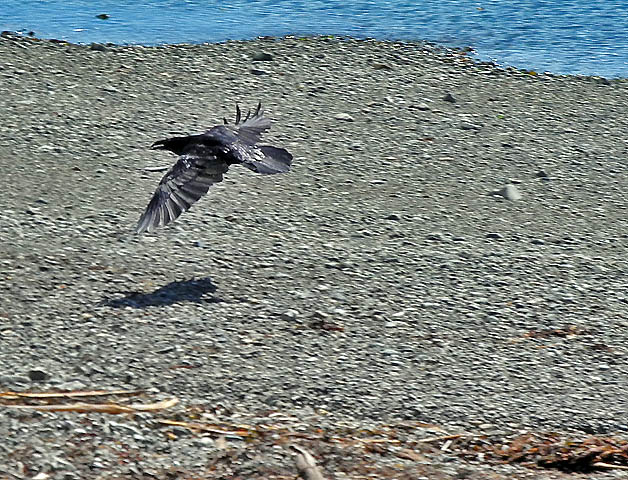
Haida Gwaii - Page 6

Sitka spruce in the 1940's where hand cut (ie two person saws), as a result, loggers cut the trees relatively higher then today
This was to save them the extra work of cutting the thicker tree base that was not needed.

Start of a visit to K'uuna Linagaay (or Skedans)
One of five very early first nations villages that have "watchman" present during the summer months....
Totem poles are an important feature of Haida Monumental Art. Often carved from a single massive cedar, the poles show family symbols belonging to each clan. The main families are Raven and Eagle; then each family has its own animal crest. The crest is the ‘property’ of the family and they are passed down through the generations. Haida society is matrilineal, so the family crests are passed down through the mother. Eagle and Raven families have their own separate animal crests, although many become intermingled though marriage. Killer whale, frog, beaver, dogfish, shark, moon, hummingbird and others can be seen on the totem as they are woven together along the length of the pole. Poles are raised to celebrate the many fundamental occurrences throughout a human lifetime. Including birth, naming, marriage, potlatches, deaths and memorial feasts. They are also erected outside a home, often that of a chief or headman of the family. Each pole has a story, told at the pole raising ceremony and if you are present at that ceremony and hear the story you will know why that particular image was used, otherwise, while you can identify the image, you won’t know its ‘story’. Originally the chief who commissioned the pole would tell the carver the family history and the crests to be used and it would be created based on that family history.

Watchman explaining the background of the remains of the village

Well documented.....

The remains of the ceremonial pole shown in the book above.....

Raven steal anything up here!!

One for Pam......
|
|
( |
|
® Design by Whitehouse Ink |
|